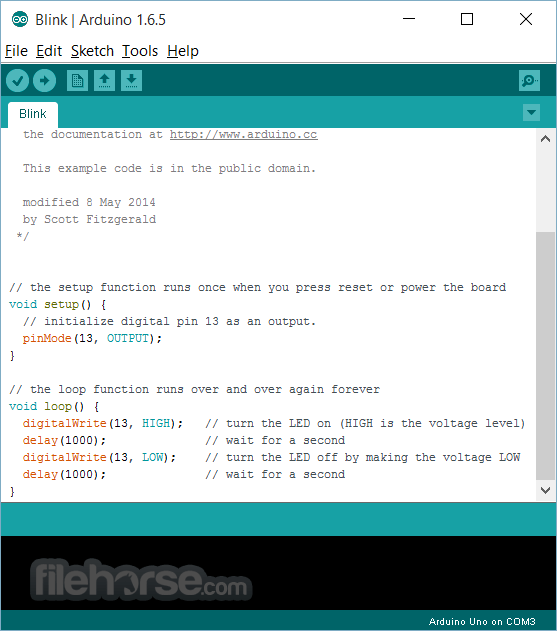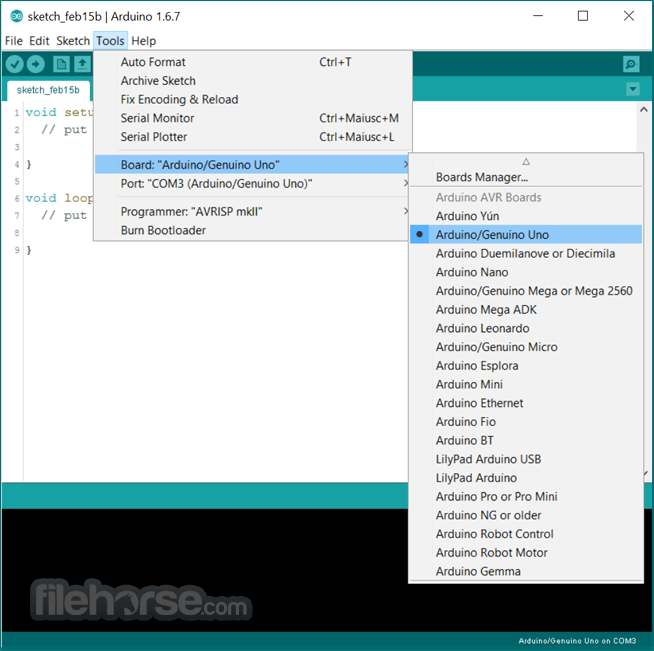-
Latest Version
-
Operating System
Windows 10 (64-bit) / Windows 11
-
User Rating
Click to vote -
Author / Product
-
Filename
arduino-ide_2.3.4_Windows_64bit.exe
Sometimes latest versions of the software can cause issues when installed on older devices or devices running an older version of the operating system.
Software makers usually fix these issues but it can take them some time. What you can do in the meantime is to download and install an older version of Arduino 2.3.4.
For those interested in downloading the most recent release of Arduino IDE or reading our review, simply click here.
All old versions distributed on our website are completely virus-free and available for download at no cost.
We would love to hear from you
If you have any questions or ideas that you want to share with us - head over to our Contact page and let us know. We value your feedback!
What's new in this version:
- Updated translation files
- feat: use dompurify to sanitize translations
- feat: introduce VersionWelcomeDialog
- feat: add donate footer to updater dialog
- build(deps): Bump docker/build-push-action from 5 to 6
- build(deps): Bump peter-evans/create-pull-request from 5 to 7
- Use Ubuntu 18.10 in Linux build container
- Don't upload multiple times to same artifact in build workflow
- Don't upload multiple times to same artifact in label sync workflow
- build(deps): Bump geekyeggo/delete-artifact from 2 to 5
- build(deps): Bump actions/download-artifact from 3 to 4
- build(deps): Bump actions/upload-artifact from 3 to 4
- feat: use Arduino CLI v1.1.1
- refactor: generate-protocol now fetch proto files from arduino_cli_{version}_proto.zip
- feat: can skip verify before upload
- feat: use Arduino CLI 1.1.0
- fix: use missing google proto files in CLI
- fix: update yarn.lock
- fix: align viewsWelcome behavior to VS Code
- fix: retry compilation if grpc client needs to be reinitialized
- feat: implement menu action to reload current board data
- fix: memory leak when scanning sketchbooks with large files
- build(deps): Bump svenstaro/upload-release-action from 2.7.0 to 2.9.0
- Use appropriate equality operator in changelog script
- Correct eslint command in lint script
- Use a dedicated GitHub workflow to check for problems with Yarn configuration
- Use a dedicated GitHub Actions workflow for testing TypeScript/JavaScript code
- Use a dedicated GitHub Actions workflow for linting TypeScript/JavaScript code
- Remove redundant signing determination code from build system
- Use appropriate indicator for Windows signing determination in build workflow
- Get job-specific configuration from matrix in build workflow
- Use appropriate indicator for dependency installation conditionals in build workflow
- Simplify and generalize configurable working directory code in build workflow
- Add PAID_RUNNER_BUILD_DATA environment variable back to build workflow
- Trim trailing whitespace in build workflow
- fix: disable local windows signing for forks PR
- fix(doc): add missing prerequisites to dev docs
- chore: switch to version 2.3.4 after the release
- fix: prevent parsing CLI errors without metadata
 OperaOpera 118.0 Build 5461.41 (64-bit)
OperaOpera 118.0 Build 5461.41 (64-bit) PC RepairPC Repair Tool 2025
PC RepairPC Repair Tool 2025 PhotoshopAdobe Photoshop CC 2025 26.5.0 (64-bit)
PhotoshopAdobe Photoshop CC 2025 26.5.0 (64-bit) OKXOKX - Buy Bitcoin or Ethereum
OKXOKX - Buy Bitcoin or Ethereum iTop VPNiTop VPN 6.4.0 - Fast, Safe & Secure
iTop VPNiTop VPN 6.4.0 - Fast, Safe & Secure Premiere ProAdobe Premiere Pro CC 2025 25.2.1
Premiere ProAdobe Premiere Pro CC 2025 25.2.1 BlueStacksBlueStacks 10.42.51.1001
BlueStacksBlueStacks 10.42.51.1001 Hero WarsHero Wars - Online Action Game
Hero WarsHero Wars - Online Action Game SemrushSemrush - Keyword Research Tool
SemrushSemrush - Keyword Research Tool LockWiperiMyFone LockWiper (Android) 5.7.2
LockWiperiMyFone LockWiper (Android) 5.7.2




Comments and User Reviews